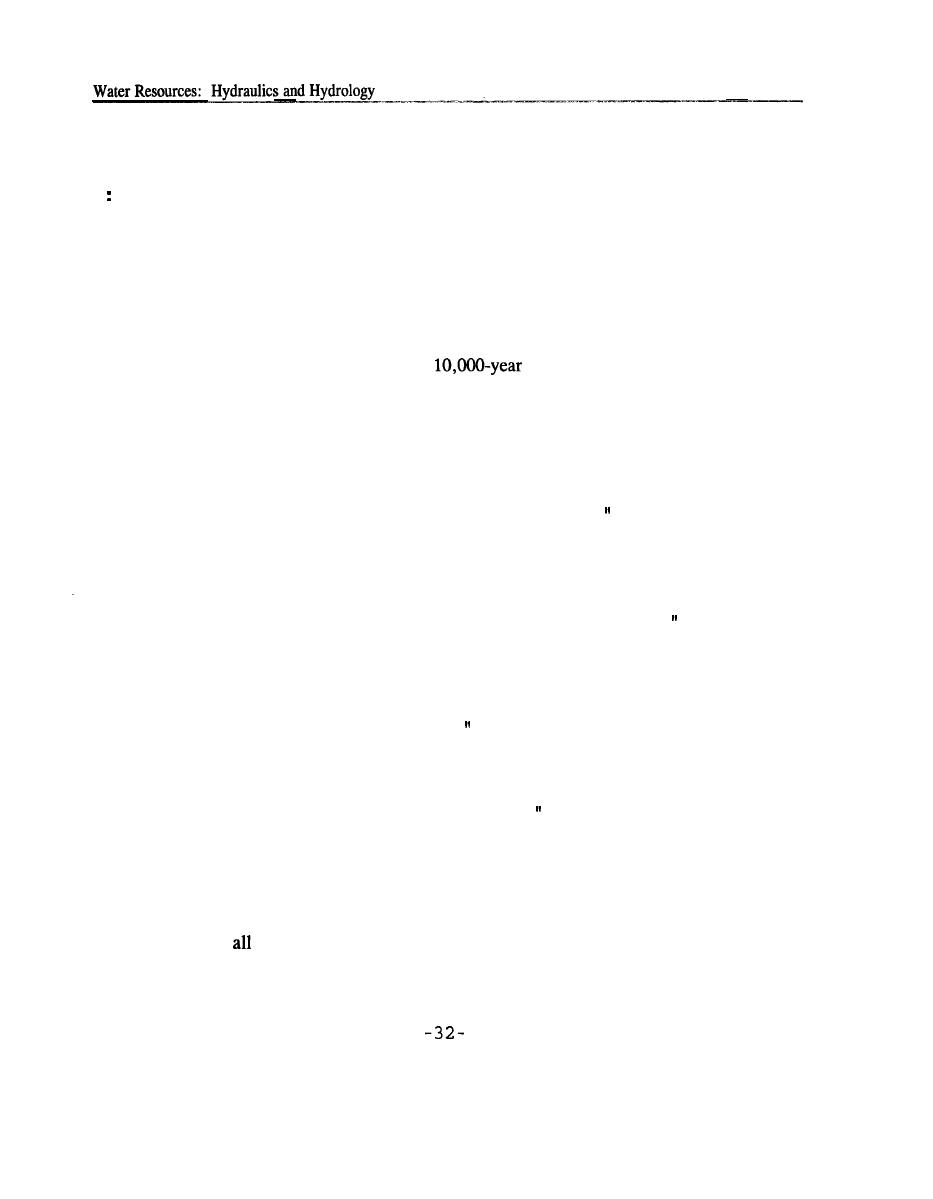
Q ..
I have, but very sketchily.
A
Well, in the case of the probable maximum flood--early on back in my early days they
would design spillways and top of dam, with a combination of top of dam and the
spillway, so that it could pass very big floods based on statistics, which we had short
records and we don't know how to estimate rare frequencies because we don't have a long
enough record, of course. Still don't and probably never will have a long enough record
to do a good job on statistics.
But people were estimating lO,OOO-year floods and saying, "Well, this lO,OOO-year flood--
we'll design our spillway to pass that
flood." When, in fact, the curve that
describes probability can flop in either direction quite a ways.
So the Corps was looking for standards. Some sort of a standard that they could use to
judge one project against another. Since they knew they couldn't do very good with
statistics, in trying to come up with good information on statistics, they were looking for
some other parameters to form a performance standard, so to speak. So they could say,
"This project is built to the same standard as some other one.
So that is when they got really interested in working with the Weather Service on our
flood potentials--you know, what is the potential, what is the most extreme flood you
could get here? The Weather Service says, "Well, we can give you some rough estimates
on over that particular drainage basin, what the biggest storm might be. You can figure
the hydrology that goes along with it.
But we haven't studied the stuff enough to really know for sure. We need to have a lot
of data, and we need to do a lot of studying in order to do this sort of thing. So the Corps
says, "Well, why don't we work together. The Corps will go out and get information
on all the biggest storms that have happened all over the country. They'll spend the
money to go out and get the data on those storms. "And we'll feed all this data to you and
you can use that data and your expertise in meteorology to come up with the biggest
storms that you can get anywhere in the country. That was the philosophy. So the
Weather Service says, "Sounds good, do it. We're willing to do that."
So they had a storm study program. The Bureau of Reclamation got involved in it, too,
and so did the Soil Conservation Service. They would go out in the field, and they'd get
all the information they could on historical storms. The storm occurred say in 1908.
They'd get the data that had been taken. They'd go out andinterview people who
happened to live in that area at the time of the storm and find out if they had any historical
notes or anything that could tell them how much it rained and how long it took for that



 Previous Page
Previous Page
